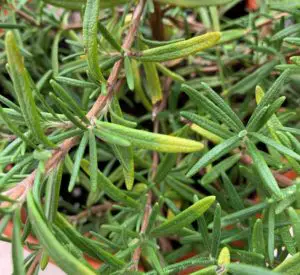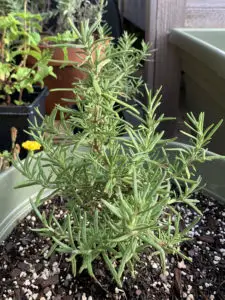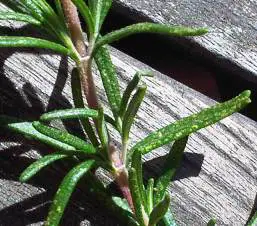Rosemary is a low-maintenance plant that thrives in sunny conditions and requires minimal watering. However, there are times when the needle-like leaves of rosemary turn yellow, indicating that the plant needs attention. In this article, we will explore the causes of yellowing leaves and suggest remedies to address the issue.
Overwatering or High Humidity
One of the primary reasons for yellowing leaves in rosemary is overwatering or prolonged periods of high humidity. Rosemary is native to the Mediterranean and is drought-tolerant. It requires less watering once established. To solve this problem, allow the soil to dry out before thoroughly watering it. Depending on the size of the plant and the type of soil, this may mean watering once every two weeks. If the rosemary is in a container, it will need more frequent watering but still needs to dry out between waterings. If the plant is in an area watered by a sprinkler, consider moving it to a spot out of the sprinkler’s reach.

Rosemary plant with yellow leaves, Okra In My Garden
Poor Draining Soil
If you are watering the rosemary correctly but the leaves continue to turn yellow, the issue might be poor draining soil. This can be caused by factors such as clay or compacted soil or low-lying areas that retain water. To improve drainage, you can add horticultural sand to the area. If the problem persists, consider relocating the plant to an area with better drainage, such as a slope where water can flow away. For container-grown rosemary, ensure that there are adequate drainage holes at the bottom of the pot.
Too Much Nitrogen
In most cases, yellow leaves on plants indicate a nitrogen deficiency. However, with rosemary, the opposite is true. When there is an excess of nitrogen in the soil, often due to excessive compost or nitrogen-rich fertilizers, the leaves of rosemary turn yellow. If the plant is in the ground, apply a balanced fertilizer only once in spring, as the growing season begins. For container-grown rosemary, occasional fertilization should be sufficient.
Container is Too Small
If your rosemary is growing in a container that is too small, the roots may become bound, leading to nutrient deficiency and inadequate moisture retention. To address this issue, transfer the plant to a container that is at least twice the diameter of the current one. Use fresh or refreshed potting mix and water thoroughly. While the plant may experience some transplant shock initially, it should recover soon.

Young rosemary in a container, Okra In My Garden
Not Enough Sun
Insufficient sunlight can also cause rosemary leaves to turn yellow. Rosemary requires at least six hours of full sun per day. If your plant is in a container, simply move it to a location with greater sun exposure. For plants in the ground, consider transplanting them to a sunnier spot. Keep in mind that the plant may experience some transplant shock, but it should start to regain its green color within a few weeks.
Insect Pests
Occasionally, insect infestations can lead to yellow leaves or yellow/white stippling on rosemary leaves. Common pests include spider mites, whiteflies, aphids, leafhoppers, and mealybugs. If you suspect an infestation, refer to helpful articles on how to deal with these pests organically.

Rosemary with insect stippling
Rosemary and Improper Soil pH?
Although plants that thrive in acidic soils often experience chlorosis (yellowing leaves with green veins) due to insufficient chlorophyll production, rosemary is not usually affected by alkaline soil. It can grow in a wide range of soil pH, including up to 8.3. Therefore, soil pH is unlikely to be the cause of yellowing leaves in rosemary. If you want to confirm, you can perform a quick soil pH test.
If you want to learn more about growing rosemary, check out our helpful article.
Thank you for reading this article! If you found it helpful, please consider sharing it with others via email and social media!
